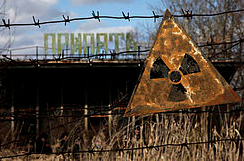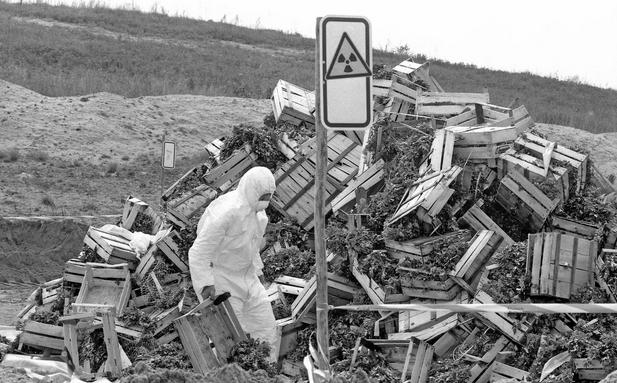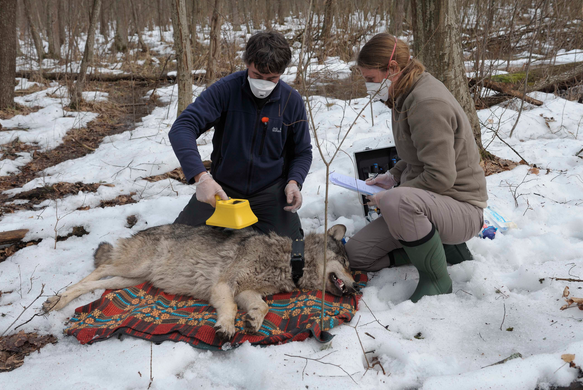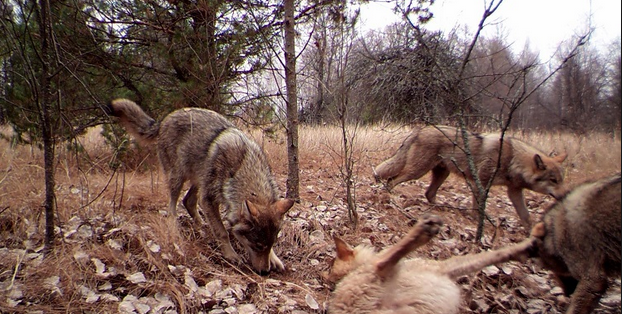The Chernobyl Disaster

The Effects of Nuclear Radiation Forty Years Later
By Alexandra Meyer
What is the Chernobyl Disaster
On April 26, 1986, in a small town in Ukraine, the Chernobyl nuclear power plant exploded. The plant workers had been preparing for a temporary shutdown of the fourth reactor for routine maintenance. One of the workers disabled the automatic safety shut off. The next morning, when the workers went to lower the fuel rods into the reactor, a ton of steam was created. Because the automatic safety features had been turned off, the reactor exploded, releasing a huge amount of radiation into the atmosphere. The first explosion damaged the other reactors, which continued to explode in a chain reaction.

Radioisotopes In Chernobyl
When the reactors exploded, four different isotopes were released into the environment. Iodine-131, cesium-137, strontium-90, plutonium-241. Before the explosion, these radioisotopes were used to power the surrounding towns. It is estimated that a dose of between 4.5 billion to 9 billion curies of radiation was released when the reactors exploded.
Balanced Decay Equations of the Isotopes released during Chernobyl
Iodine- 131

Cesium- 137

Strontium- 90

Plutonium- 241

Half-Life and Decay
Radioactive decay is how a atom releases radiation as it loses energy. The amount of radiation it emits over time is related to its half-life. Of the radioactive elements released at Chernobyl, Iodine-131 has the shortest half-life, and Cesium-137 has the longest half-life.
Iodine-131's half-life is 8 days. Plutonium-241's half-life is 14 years. Cesium-137's half-life is 30 years. Strontium-90's half-life is 29 years

The Radiation Spreads
A huge amount of radiation was released when the reactors at Chernobyl exploded. This radiation did not stay localized to the area, and spread all through the air and water. It is suspected that the entire western hemisphere was affected by the radiation emitted from Chernobyl.

Health Hazards of Chernobyl
When the reactors exploded, two plant workers were killed instantly. Over the next few weeks, 28 more workers died due to radiation poisoning. Within the first 3 months, 31 people died of radiation poisoning. As time went on, over 6000 cases of thyroid cancer were reported from people who were exposed to radiation. This is probably because of the Iodine-131, which goes after the thyroid gland. Cataracts were also seen in people in the affected areas.

Pros
While Chernobyl was a horrible accident, there are a few pros to what happened. We were able to study the effects of radiation of people and a large range of area. We were also able to learn more about how to prevent something like this from happening in the future.
Cons
Chernobyl had several cons. One of those are workers and innocent people being killed. Another is the health affects of the radiation. A third was the loss of a large area of land and millions of dollars that was used to build the power plant and surrounding town.
Pros and Cons
The Future of Chernobyl
Forty years later, the radiation levels in Chernobyl are still too high for people to safely return there permanently. Limited access is permitted to scientists. Animals and nature have taken over the area, including wild horses, beavers, raccoon dogs, foxes, and the top predator, wolves. Because the radiation in the animals is so high, hunting is not allowed, causing the animals to thrive.


Image Sources
1. https://upload.wikimedia.org/wikipedia/commons/thumb/1/16/VOA_Markosian_-_Chernobyl02.jpg/250px-VOA_Markosian_-_Chernobyl02.jpg
2. http://altered-states.net/barry/newsletter492/radiation-map-chernobyl-disaster.jpg
3. http://media.mcclatchydc.com/static/features/Chernobyl30/photos/Chernobyl-Part4_02.JPG
4. https://chernobylguide.com/wp-content/uploads/2016/11/chernobyl_wolves11.jpg
5. http://4.bp.blogspot.com/-vL7ZQtdd_vo/T-MU52G3orI/AAAAAAAABgA/InOY965y_OE/s1600/Radioactive.jpg
Info Sources
1. Nukewatch. Chernobyl: how much radication was released [Internet]. Luck (WI): [cited 2016 Nov 27]. Available from http://www.nukewatchinfo.org/pieces/How%20much%20radiation%20was%20released%20by%20Chernobyl%20-%20Feb%202015.pdf
2. Marc Lallanilla. Chernobyl: Facts About The Nuclear Disaster [Internet]. Live Science; September 25, 2013 [cited 2016 Nov 27]. Available from http://www.livescience.com/39961-chernobyl.html
3. WHO. Health Affects of The Chernobyl Accident [Internet]. 2006 Apr [cited 2016 Nov 27]. Available from http://www.who.int/ionizing_radiation/chernobyl/backgrounder/en/
4. John Wendle. Animals Rule Chernobyl 30 years after Nuclear Disaster [Internet]. National Geographic; 2016 Apr 18 [cited 2016 Nov 27]. Available from http://news.nationalgeographic.com/2016/04/060418-chernobyl-wildlife-thirty-year-anniversary-science/
The Chernobyl Disaster: Chemistry Project
By chessiekitty
The Chernobyl Disaster: Chemistry Project
- 1,656



